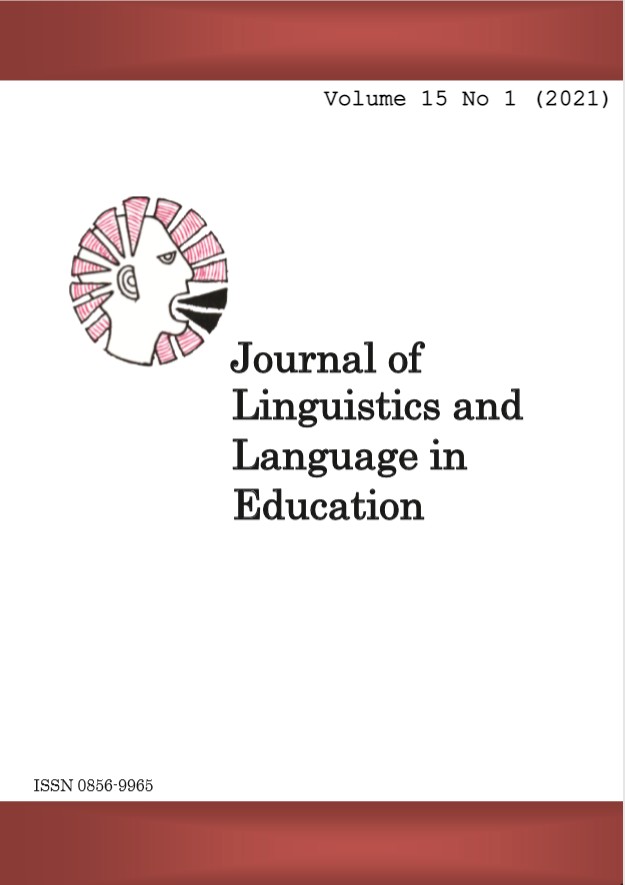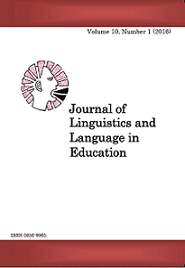Mwingiliano wa Vishazi Tegemezi na Vishazi Bebwa
Abstract
Abstract
This study explores the subordinate and embedded clause concepts following
their differences in usage among grammarians. There are grammarians with
an approach that the terms have no difference content in description but only
terminological difference. Also, it is further explained that the concept of
subordinate clause has a background in traditional grammar; that is, it is more
semantic in describing syntactic issues. With that basis, in order to avoid
relying on semantics as well as reflecting syntactical flavour in terminologies;
there is an approach purporting to use embedded clause instead of subordinate
clause. The subordinate clause is synonymous to embedded clause because they
all make sense when attached to an independent clause. Therefore, this
approach considers the terms synonyms and they can be used interchangeably.
But there is another approach which does not take these concepts as synonyms.
The only reason is that the terms are no how related and they cannot be used
interchangeably since the opposite of embedded clause is unembedded clause,
not subordinate clause. Due to such difference in approach, this study uses
Kiswahili data to find out the connection and difference existing between these
two terms, subordinate and embedded clauses. The data were gathered from
examples used during lectures in a PhD (Kiswahili) class and various
publications that had explored about clauses and sentences in Kiswahili.
Moreover, those data were analysed based on the Extended Standard Theory.
The findings revealed that subordinate clauses are characterised by two main
features: the presence of reflexive affixes in a verb or the use of subordinators
which can be overt or covert. On the side of embedded clauses, the findings
showed that it is contextually identified. Generally speaking an embedded
clause is a subordinate clause which cannot be omitted in a sentence without
distracting the predication of the verb or noun in the independent clause of
matrix sentence. The semantic and syntactic features of the Kiswahili nouns
and verbs dictate the embedment of the subordinate clauses. It is thus
concluded that these terms cannot be used synonymously. Nevertheless, the
terms are related since the subordinateclause is one of the main types of
clauses while the embedded clause is one among the types of subordinate
clauses. Simply put, depending on the structure of a sen
References
Anderson, C. (2018). Essentials of Linguistics. Hamilton: McMaster
University.
Besha, R. M. (2007). Utangulizi wa Lugha na Isimu (Toleo la 2). Dar
es Salaam: Macmillan Aidan.
Borsley, R. (1999). Syntactic Theory: A Unified Approach (Toleo la 2).
London: Arnold.
Chomsky, N. (2002). Syntactic Structures (Toleo la 2). Berlin:
Mouton de Gruyter.
Chomsky, N. (2015). Aspects of the Theory of Syntax (Toleo la
Kumbukizi ya miaka 50). Cambridge: The MIT Press.
Habwe, J. & Karanja, P. (2004). Misingi ya Sarufi ya Kiswahili.
Nairobi: Phoenix Publishers.
Khamis, A. M. & Kiango, J. G. (2002). Uchanganuzi wa Sarufi ya
Kiswahili. Dar es Salaam: TUKI.
Kombe, L. E. (2018). Uambatishaji wa Vishazi katika Lugha ya
Kiswahili: Uchunguzi wa Madai ya De Vos na Riedel (2017).
Kioo cha Lugha, 16, 153 €“164.
| Mwingiliano wa Vishazi Tegemezi na Vishazi Bebwa
Massamba, D. P. B., Kihore, Y. M., & Hokororo, J. I. (1999). Sarufi
Miundo ya Kiswahili Sanifu. Dar es Salaam: TUKI.
Mekacha, R. D. K. (1987). Tungo Rejeshi katika Kiswahili.Mulika,
, 83 €“91.
Mgullu, R. S. (1999). Mtalaa wa Isimu: Fonetiki, Fonolojia na
Mofolojia ya Kiswahili. Nairobi: Longhorn Publishers.
Mkude, D. J. (1983). Uchambuzi wa Sentensi za Kiswahili. Katika
TUKI (Mh.). Lugha ya Kiswahili: Makala za Semina ya
Kimataifa ya Waandishi wa Kiswahili I (kur. 219 €“243). Dar es
Salaam: Taasisi ya Uchunguzi wa Kiswahili.
Mpiranya, F. (2015). Swahili Grammar and Workbook. New York:
Routledge.
Payne, T. E. (2006). Exploring Language Structure: A Student ' s
Guide. Cambridge: Cambridge University Press.
Polomé, E. C. (1967). Swahili Language Handbook. Washington,
D.C.: Center for Applied Linguistics.
Rauh, G. (2010). Syntactic Categories: Their Identification and
Description in Linguistic Theories. Oxford: Oxford University
Press.
Robins, R. H. (2013). General Linguistics: An Introductory Survey
(Toleo la 4). London: Routledge.
Stockwell, R. P. (1977). Foundations of Syntactic Theory. New
Jersey: Englewood Cliffs.
Tallerman, M. (2011). Understanding Syntax (Toleo la 3). London:
Hodder Education.
Wesana-Chomi, E. (1973). Towards the Syntax of Complex Sentences
in Swahili.KISWAHILI, 42(2), 30 €“51.
Wesana-Chomi, E. (2017). Kitangulizi cha Muundo Viambajengo wa
Sentensi za Kiswahili. Dar es Salaam: Taasisi ya Uchunguzi wa
Kiswahili.
Downloads
Published
Issue
Section
License
Copyright © by Department of Foreign Languages and Linguistics, University of Dar es Salaam
All rights reserved. No part of this publication may be reproduced or transmitted in any form or by any means, electronic or mechanical, including photocopying, recording, or any information storage or retrieval system, without permission in writing from the publisher, except for short extracts in fair dealing, for research or private study, critical scholarly review or discourse with an acknowledgement.



